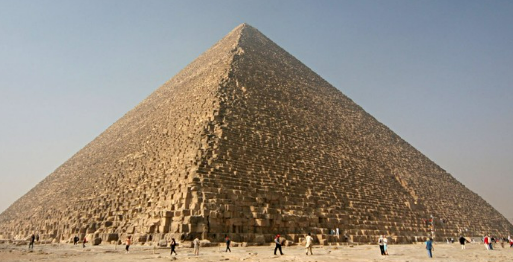Some conspiracy theories about the Pyramids say the building was created by aliens because the complexity of its construction was considered too sophisticated for humans at that time.

There is new evidence that the Pyramids were completely devoid of alien interference.
The discovery of a branch of the Khufu River, a branch of the Nile, which probably flows next to the site, is believed to have helped transport the stones for the construction of the Pyramids. Researchers believe that the river that flows right near the Great Pyramid of Giza makes it easier for large stones to be transported to the site. This enabled the construction of the world's tallest man-made structure for about 4,000 years.
A group of researchers from France, China and Egypt collaborated on a project to track petrified pollen grains in the sediments around Giza, to reconstruct a possible waterway, a branch of the Nile, helping workers create the Giza Pyramid Complex.
"Paleoecological analyzes have helped reconstruct the 8,000-year history of the Nile's flow in this area, suggesting that earlier waterscapes and higher river levels some 4,500 years ago facilitated the construction of the Giza Pyramid Complex," they wrote in the journal Proceedings of the National Academy of Sciences. Sciences.
"The Pyramids of Giza initially ignored a branch of the Nile that was no longer functioning," they said as quoted by Popular Mechanics, Friday (9/9/2022).
The team said the Khufu River branch from the Nile allowed navigation to the Pyramid Harbor complex, but its exact environmental history remains unclear.
So, to find out, the group relied on pollen-derived vegetation patterns to reconstruct fluvial variation in the Giza floodplain.
"After high stand levels coincided with the African Moist Period, our results suggest that the Giza stretch of water responded to insolation-driven gradual aridification in East Africa, with the lowest Nile levels recorded at the end of the Dynastic Period," they explain.
With the Nile more than 6 km away from Giza now, the distance may have been much closer during the construction of the Pyramids. The team concluded that the Khufu branch remained at high water levels during the reigns of King Khufu, Khafre, and Menkaure. The kings facilitated the transportation of building materials to the Giza Pyramid Complex.
The researchers unearthed fossilized pollen grains trapped in sediment and rock layers in the area. The data shows that flowering grasses were found near the site. There's the same grass that still lines the Nile, and additional evidence of marsh plants, a type of plant that takes time to develop around the edges of bodies of water.
:::Discord :::Whatsapp:::Twitter :::